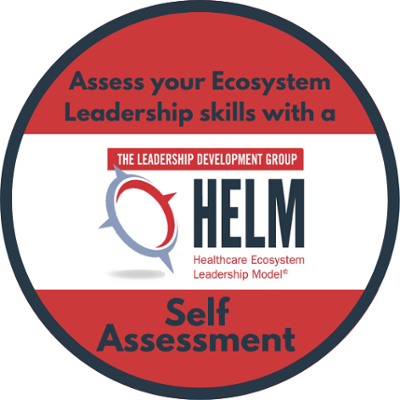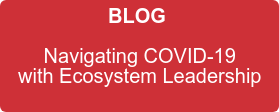Originally written for and posted to ACHE’s Early Careerist Newsletter
It is quite a time to be in healthcare. Due to the COVID-19 pandemic, we have seen enormous innovation occur at an exceptional pace (e.g. the rapid adoption of telehealth, standing up hospitals to serve overwhelmed communities in record time, sharing resources across state lines, etc.), representing opportunities for real change in our industry.
The need for cross-sector collaborative partnerships to enhance community health and wellness has never been clearer. For systemic change to occur, diverse stakeholders with unique experiences and points of view must unite around a common purpose to help the patients we serve and improve the health of our nation.
How to Foster Systemic Change
Our research suggests leaders who exhibit the ability to envision a new future, align diverse stakeholders, manage obstacles and boundaries, and continuously act and learn are most prepared to galvanize and navigate effective collaborations. The Health Ecosystem Leadership Model, known as HELM, can help leaders develop the competencies needed to do just that.
Envision a New Future
HELM leaders not only ignite the kind of dialogue that leads to meaningful change, but also take the time to listen, discover, organize and absorb perspectives from others to create a shared understanding of the organization’s direction and goals. With a shared vision, HELM leaders generate solutions they may not have otherwise considered.
Simple tips for developing your envisioning capabilities:
- Recognize that your own organization’s or industry’s experience will heavily influence how you think, the information you have and where you look for answers.
- See value in and seek views and ideas from people from specialties, backgrounds and viewpoints different from your own.
- Integrate these ideas into a shared vision and common purpose.
Align Diverse Stakeholders
HELM leaders advocate for change, orchestrate actions, seek connections with stakeholders, take steps to build trust, and demonstrate respect for diverse expertise and perspectives. Additionally, they engage stakeholders to build on their original vision and incorporate their inputs and interests to develop a shared solution.
Simple tips for developing your aligning capabilities:
- Take concrete steps to enable stakeholders to come together and build relationships.
- Demonstrate respect for diverse expertise, perspectives, interests and values by placing your own assumptions to the side, asking questions and working to understand each stakeholder’s viewpoints.
- Encourage open dialogue by getting everyone involved, not taking over the conversation and focusing on inquiry more than advocacy.
Manage Boundaries and Obstacle
HELM leaders support constructive conflict by keeping an open mind, disagreeing respectfully and tirelessly seeking common ground. This requires vulnerability, empathy, and a willingness to push through discomfort and engage difficult conversations.
Simple tips for developing your managing boundaries capabilities:
- View conflict as an opportunity, listen to objections, acknowledge concerns, redirect conversations to the shared purpose and seek ways for all parties to contribute.
- Resolve tension by working with others to generate options and solutions that meet the shared interests of the group.
Act and Learn
HELM leaders define “change plans” and take reasonable steps despite uncertainty, identify what is working and what is not, and adapt plans to advance a shared vision. They also act under uncertain conditions to advance the shared vision that was created at the onset of the collaboration.
Simple tips for developing your act and learn capabilities:
- Define plans and take concrete action by planning and initiating tactical steps with defined performance indicators.
- Act despite uncertainty by taking reasonable steps that keep the plan in motion and avoiding over analysis and inaction.
- Use feedback to adapt plans and assess which objectives were achieved and which were not, identifying the parts of the solution that worked and what still needs to be changed.
HELM in Action
Intermountain Healthcare, a Utah-based integrated health system, has a long history of successful collaborations. In recent years, the health system partnered with an IT company with the shared goal of transforming patient data into actionable insights. The collaboration focused on identifying and preventing the progression of chronic diseases such as end-stage renal failure. The IT company’s ability to identify nonmedical factors that influence health (housing instability, food insecurity, transportation, etc.) enabled Intermountain Healthcare to design programs to meet patients’ specific psychosocial needs, enhancing the overall well-being of the communities served.
Call to Action
The complex, emergent and interdependent challenges the health industry faces require transformative and collaborative leaders. To further develop your HELM leadership capabilities, work on being a convener who brings parties together from diverse sectors, considering others’ points of view and broadening your own horizons.
Recommended Content






